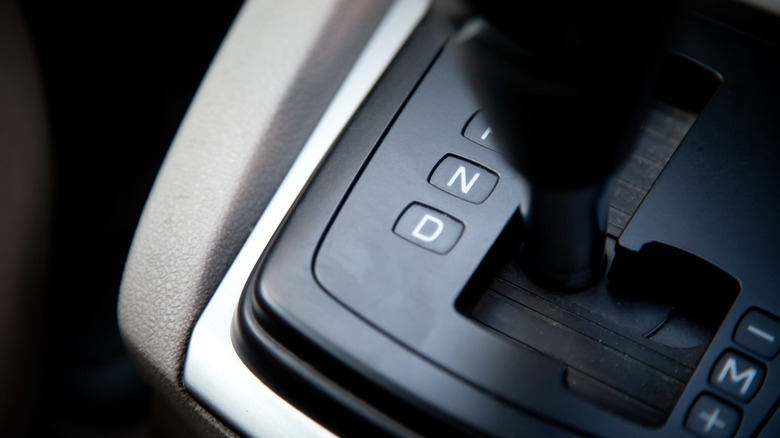Here's What The N Stands For On Your Car's Transmission Gear Selector
Vehicles equipped with an automatic transmission would typically have Park (P), Reverse (R), Neutral (N), and Drive (D) gears. Shifting to P (or Park) locks the gearbox and prevents the car from moving forward. Meanwhile, engaging D (or Drive) is for moving the car forward, and R (or Reverse) is for backing up the vehicle.
But what about N, more commonly referred to as neutral? Shifting the gear lever in your car to N is no different from putting it in the neutral position in a manual car. Technically speaking, N or neutral is not a gear, unlike drive (D) or reverse (R). Instead, neutral disengages the driving wheels from the transmission so the left and right front wheels can roll independently. Moreover, the neutral gear in an automatic gearbox is like the middle ground between reverse and drive, allowing the transmission to disengage when moving the gearshift lever between gears.
How to use N in an automatic car
Since the N (neutral) position unties the driving wheels from the transmission, it's the ideal setting for recovery when the car gets stuck in snow or mud. With the transmission in neutral, pushing or towing the car is more straightforward. Keep this in mind the next time you encounter an emergency.
In addition, you can place the gear selector in neutral at traffic lights or when stopping the vehicle momentarily. In this situation, make it a habit to engage the parking brakes whenever the gear is in neutral. Unlike in Park, when the transmission is locked, shifting to N frees the front axles from the gearbox, allowing the vehicle to creep forward or backward on hills or slopes.
Finally, the N gear is suitable when, for some reason, the gas pedal becomes unresponsive. In this case, selecting neutral will disengage the gearbox and prevent the vehicle from speeding further, allowing it to coast smoothly before applying the brakes.

